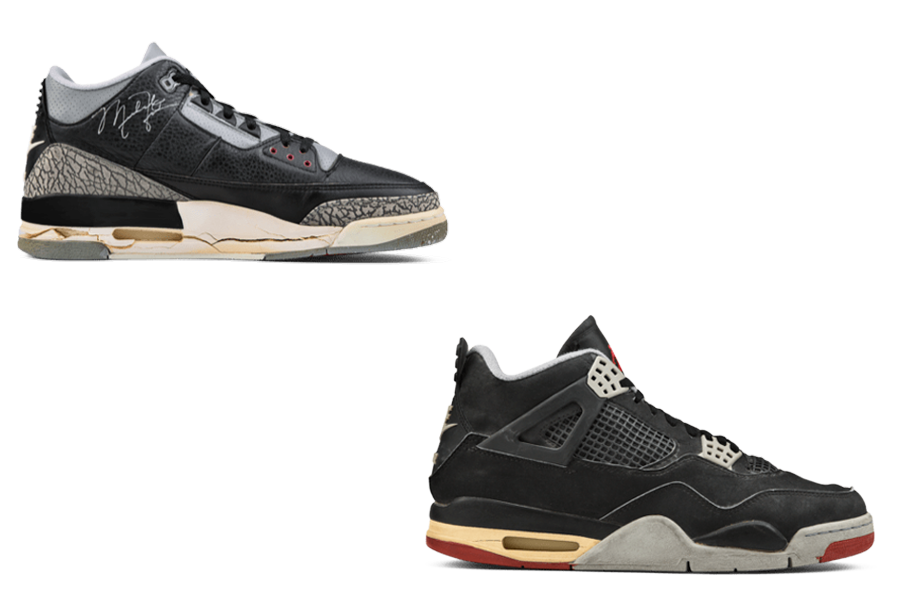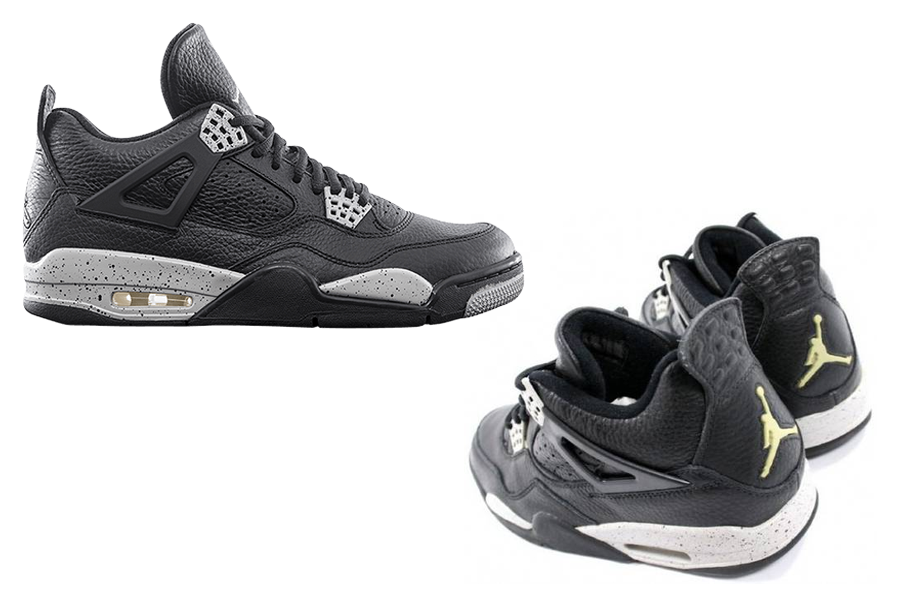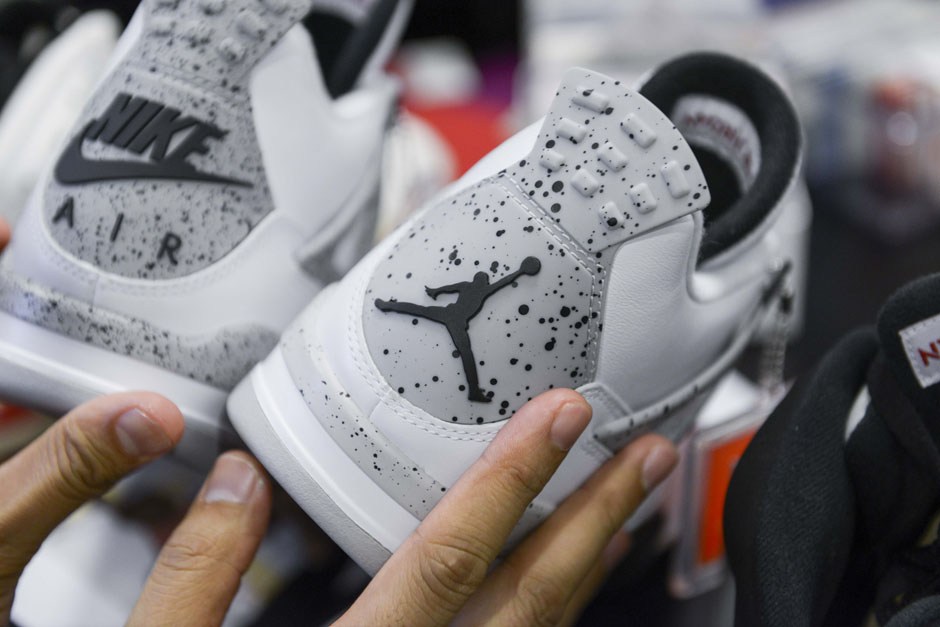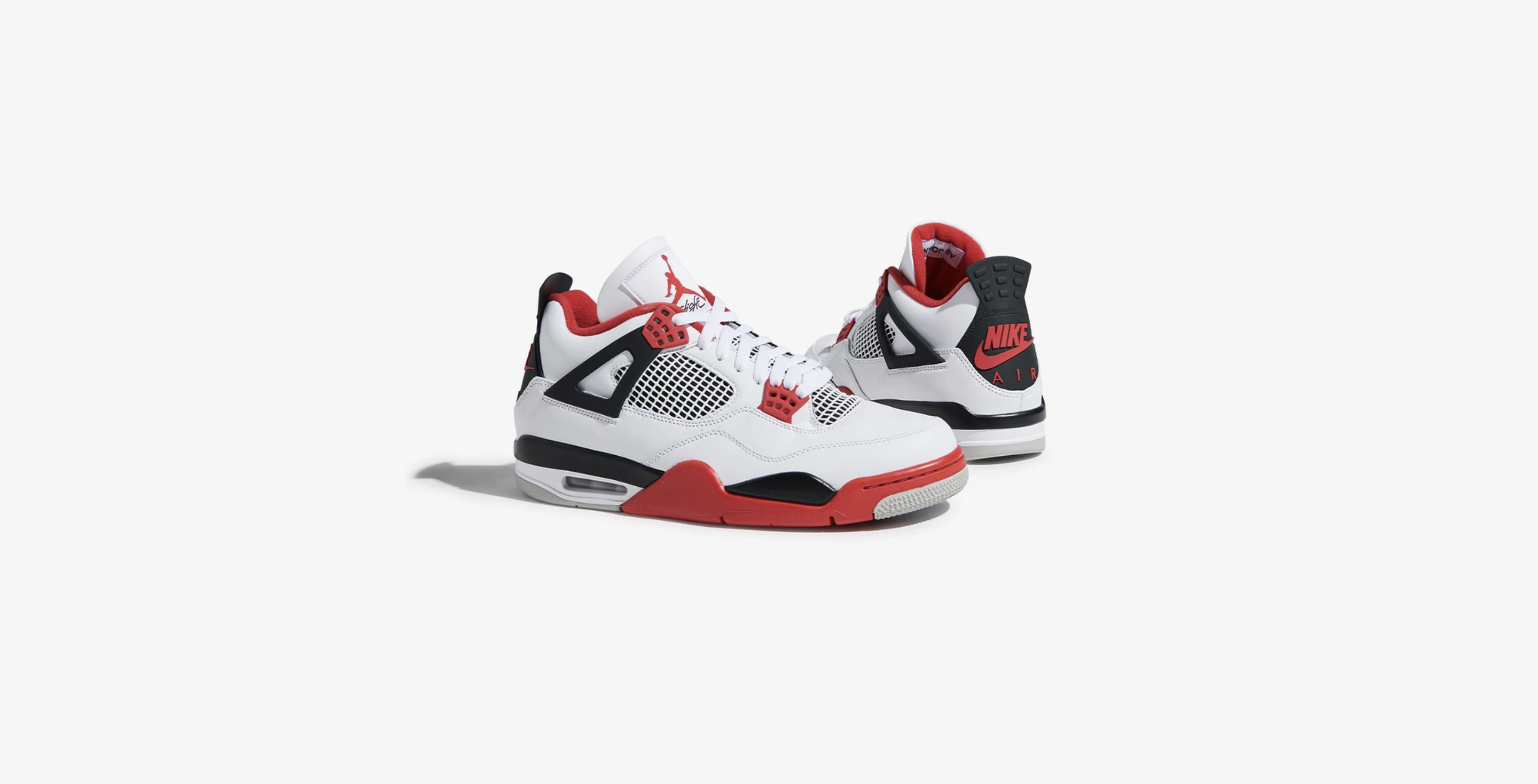There are few sneakers that carry a greater legacy than the Air Jordan 3 and the Air Jordan 4. Both silhouettes play an iconic role in both Michael Jordan’s career and that of the Jordan Brand itself. And while each shoe has seen its fair share of retros and new colourways, there’s an ongoing climb that sneakerheads constantly find themselves at the end of. Retros and newer colourways released in the 2000s and early 2010s often steered far from their original glory, with noticeable differences found in materials, quality, and even the packaging. And one of the most discerning points of all, the use of either a Nike Air vs. a Jumpman logo on the back heel has long been a tipping point for Jordan purists.
When the two silhouettes were released in the late eighties, they made their debuts at pivotal points of Jordan’s career. The Air Jordan 3 made its first appearance in 1988 and MJ was on the heels of a historic year that included accolades of All-Star MVP, the Slam Dunk Contest title, steals and scoring champion, and Defensive Player of the Year.
 Similarly, the Air Jordan 4 made a historic entrance in 1989 in Cleveland, Ohio, when Jordan pulled off “The Shot” — finishing Game Five against the Cavaliers with 44 points. Not to mention, the silhouette’s release made major film cameos, adding to its status as an instant style icon.
Similarly, the Air Jordan 4 made a historic entrance in 1989 in Cleveland, Ohio, when Jordan pulled off “The Shot” — finishing Game Five against the Cavaliers with 44 points. Not to mention, the silhouette’s release made major film cameos, adding to its status as an instant style icon.
Legendary designer Tinker Hatfield intended for the Jordan 4 to be an evolution of the Jordan 3, yet the two silhouettes maintained a key similarity — Nike Air branding on the back heel. When the Air Jordan 4 received its first retro, however, a change in branding created a consequential divide.
The Air Jordan 4 returned for the first time in 1999 and released in four colorways: the White Cement, Black Cement (or Bred), Columbia, and Oreo. The latter two colorways, however, were released as Retro+ models — brand new colorways of the storied silhouette. Both included a Jumpman on the back which signified new offerings, not to be confused with the originals.

And while there were likely some fans who disapproved of the Jumpman logo, it was the first time that Retro models would be highly sought after. The Air Jordan 1, 2, and 3, were re-released in the early 90s but they didn’t see the same success as the 1999 Jordan 4s did. As time went on, however, more and more demand for “Nike Air” branding started to brew, with a lot of sneakerheads viewing it as the “better version” of the shoe.
Take for example Jerry Lorenzo, founder of luxury streetwear label Fear of God. The sneaker and footwear designer has been more than vocal about his opinion of branding on Jordans.
“I don’t buy Jordans with a Jumpman on it,” Lorenzo said during an appearance on Complex’s Sneaker Shopping. “It’s not the real thing; I need that Nike Air on the back.”
Zarek Valentin, Houston Dynamo FC defender, and sneakerhead, also points out that having the exact model worn by Jordan, signified by the “Nike Air” logo, is a level of status that’s unmatched in the soccer world.

“In professional soccer, no player has their own signature silhouette of cleats — only individual colourways,” he says. “Contrary to the NBA, wearing Messi or Ronaldo colourways on the pitch is viewed as lame. Thankfully, things are different off the field. Having ‘Nike Air’ on the back of my Jordans allows me to wear the exact model Jordan wore. Contrary to Messi, I’m completely cool trying to ‘Be Like Mike’.”
But while Nike Air branding on the heel may be the unanimous choice, that doesn’t mean that the Jumpman logo should be overlooked — after all, it was donned on some the most iconic Jordan 4 collaborations of all time, including several iterations of the Eminem 4, the Kaws, and the Travis Scott.
“The original Air Jordan 3 and 4 had Nike Air logos on the heel, and that’s the only way it should be in my opinion,” says Sean Go, sneaker YouTuber. “Still, the Jumpman logo should be remembered in sneaker culture, and no doubt there have been a ton of beautiful colourways that incorporated the logo.”
“I don’t buy Jordans with a Jumpman on it … It’s not the real thing; I need that Nike Air on the back.”
– Jerry Lorenzo
Chris Chase, co-founder of WearTesters, also agrees that while the Nike Air logo may reign supreme, both logos carry their own value and significance.
“The Nike Air is what fans from day one recognize,” he tells Sole Savy in an interview. “While some see Jumpman-branded pairs as inferior, I feel it signifies when Michael Jordan became more than just a Nike athlete.”
“He was the brand. Unprecedented at this time, this really was something totally new to fans and consumers.”

For better or worse, Jumpman branding would ultimately take over the heel of Jordan 4s, retro colourway or not, for close to 20 years. And as the silhouette received more and more releases, the heel logo wasn’t the only major change. While the Jordan 4s released in 1999 were nearly perfect recreations, releases have since missed the mark, with notable changes in packaging, materials, design features in the shoe, and even the overall shape.
When comparing releases in the mid-2000s and early-2010s, “the shape of the shoes were pretty different compared to the original mold,” Go says. Many of them had a “swooping and elongated ‘banana’ shape” that would look remarkably off from the OGs, or even more recent models, for that matter.
The construction of the tongues on both models is another example to show changes in construction over the years. One issue with retros of the Jordan 3, specifically, was that material on the inside of the tongue would often wrap up and over the front, completely unlike the originals.

“While the Air Jordan 4 has yet to receive an OG-style tongue on the modern-day retro, the Air Jordan 3 now has the proper shape and cut,” Chase explains. “Even smaller details are being taken care of — like tucking the interior liner of the tongue behind the leather as it was originally.”
Another notable difference includes the toe panels and the height of the toe box. The original silhouettes of both the Jordan 3 and Jordan 4 featured toe boxes that were lower in height, as well as a lower toe tip.
It was only in recent years that Jordan 3 and 4 releases would take considerable steps to being closer to the original models. By using less padding on the interior of the shoe, the silhouettes became slimmer and less box-like in shape, much like their original versions. The elephant print used on Jordan 3s has also been improved by using thinner materials — although the print is still heavier and thicker compared to those found on the originals.
Not to mention, it was only in 2019, with the release of the Jordan “Black Cement” that the Nike Air logo would make its return to the heel. This model in particular was exceptionally important — in addition to the heel, it was also the first Jordan 4 to include the original box since 1989.

“They’ve done a great job recreating the packaging and tissue paper — that OG feel and experience of opening a brand-new pair of Jordans straight from the 80’s and 90’s,” Chase says. “Materials, on the other hand, are harder to replicate due to many of the older factories no longer operating. They can make the products a bit more premium than what they were, but that could end up frustrating some fans.”
The Nike Air logo has since made its return on several Air Jordan 4 models. Not to mention, the highly-anticipated “Fire Red” colourway is set to make a return, complete with its original packaging, rubber detailing, and OG Nike Air branding.
But that’s not to say the Jumpman is seeing any sort of retirement. It’s still commonly used on both the Air Jordan 3 and Air Jordan 4, especially when distinguishing between non-original colourways.
“We see the brand list original colours as ‘OG’ and they now feature the original Nike Air branding,” Chase explains. “The new colours feature a Jumpman, however, this isn’t a rule that’s been set in stone. There are some non-original colourways that release with Nike Air branding, but they usually tell a story of the past.”
Whether you love it or hate it, the Jumpman logo, evidently, is here to stay. And while retros and new colourways will come and go, the onus falls on the Jordan brand, with hopes that each new pair claws closer and closer to its original glory.

Image 1 via Jordan Brand
Image 2 via GOAT
Image 3 via Yomzansi
Images 4 – 7 via Nike

